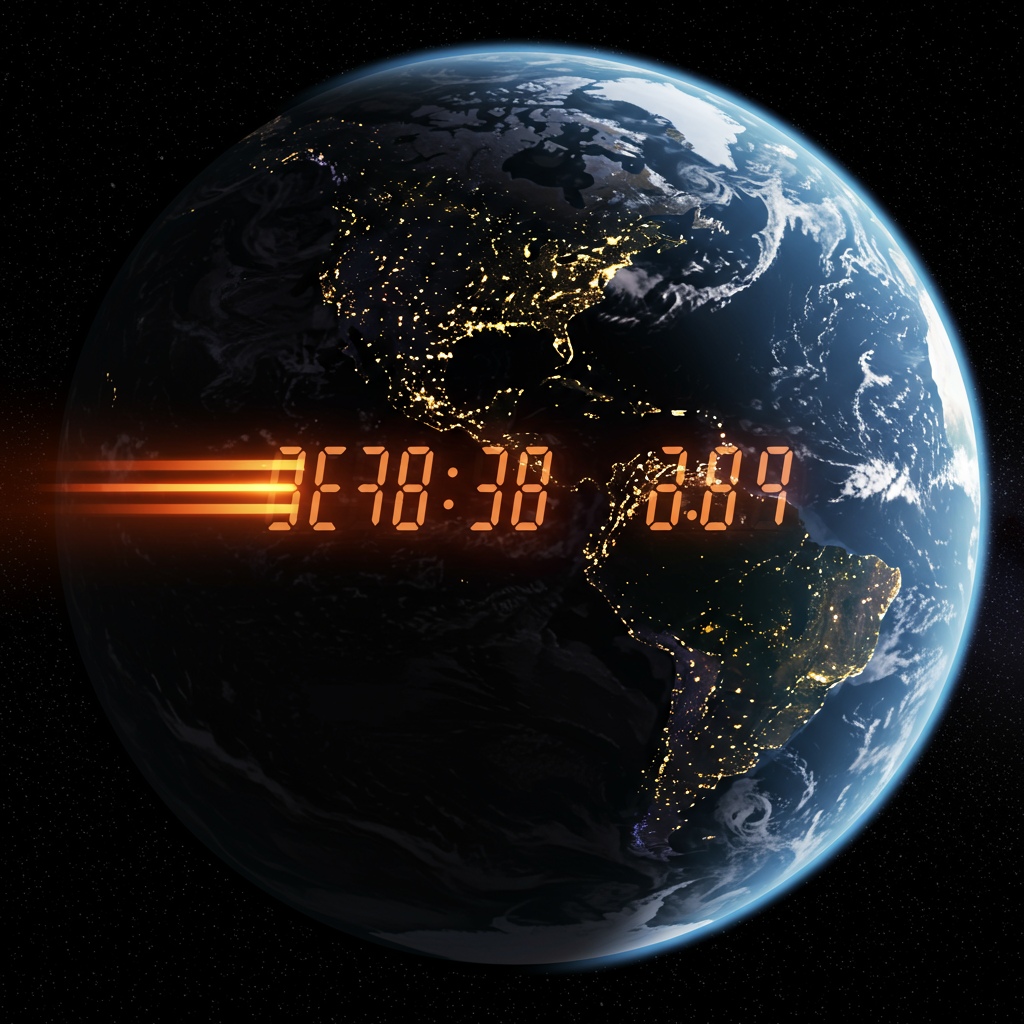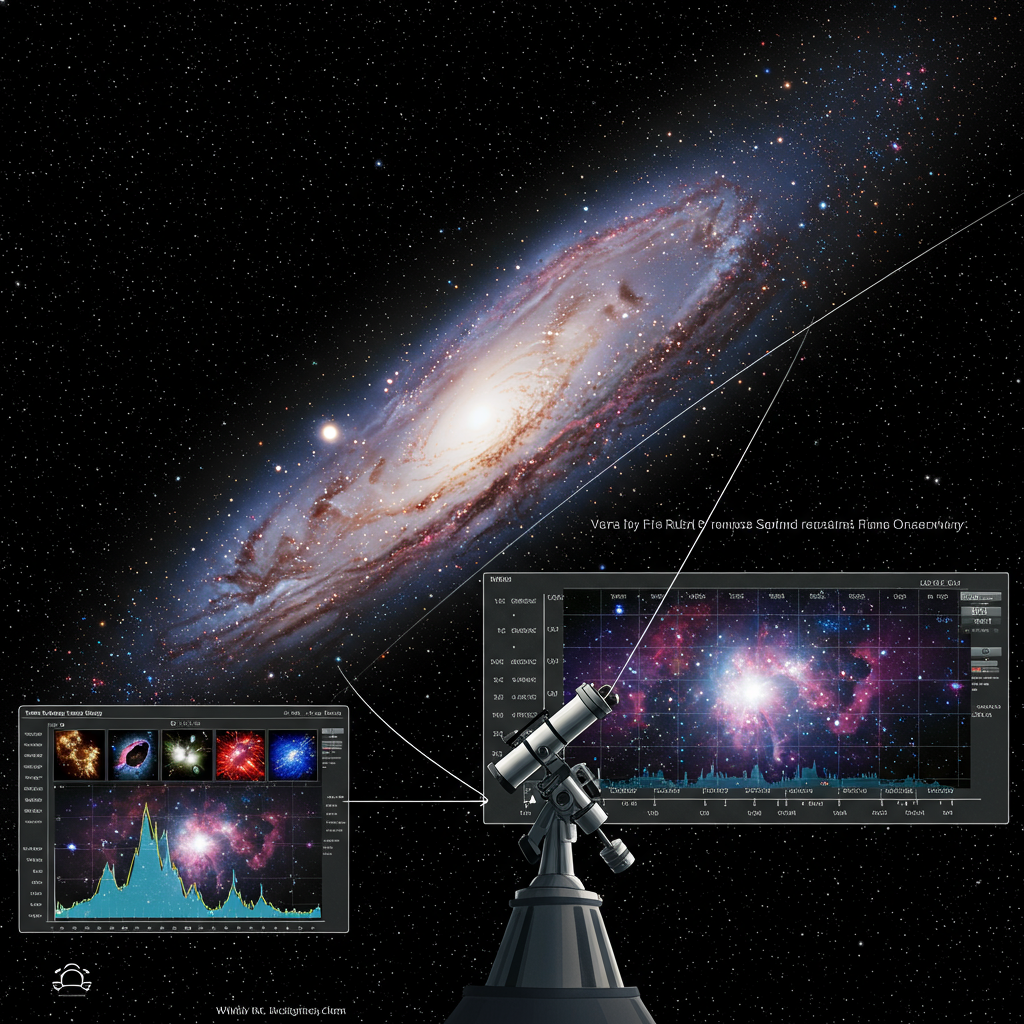Our planet is full of surprises, and one of the most intriguing involves its very spin. Earth is currently rotating faster than it has in decades, causing days to become infinitesimally shorter. This unusual acceleration, particularly noticeable since 2020, has left scientists puzzled, prompting a deep dive into the complex forces governing Earth’s motion. While the change is too small for us to feel, it holds significant implications for global timekeeping and reveals deeper mysteries about our planet’s inner workings.
The Unseen Speed-Up: What’s Happening with Earth’s Spin?
For the first time in modern history, Earth’s rotation is consistently speeding up, shaving milliseconds off the standard 24-hour day. Records kept by atomic clocks since 1973 show that prior to 2020, the shortest day was 1.05 milliseconds less than usual. However, since then, our planet has repeatedly broken its own speed records.
On July 5, 2024, Earth completed its rotation an astounding 1.66 milliseconds faster than average, marking the shortest day ever precisely measured. Looking ahead to 2025, several days are predicted to be remarkably brief. July 10, 2025, for instance, already clocked in at 1.36 milliseconds shorter. July 22, 2025, is expected to follow suit, becoming the second-shortest day of the year at 1.34 milliseconds less than 24 hours. Another contender, August 5, 2025, is forecast to be about 1.25 milliseconds shorter.
These tiny fractions of a second are imperceptible to humans. A typical blink of an eye takes between 100 and 400 milliseconds, dwarfing the minute changes in Earth’s spin. Yet, these precise measurements are crucial for scientists, revealing a fascinating and complex interplay of forces.
A Millennia-Long Dance: Understanding Earth’s Rotational History
The speed of Earth’s rotation has never been fixed. Over billions of years, our planet’s day length has undergone dramatic transformations. In Earth’s early history, roughly 1 to 2 billion years ago, a day lasted a mere 19 hours. This was due to the moon being much closer, exerting a stronger gravitational pull that paradoxically accelerated Earth’s early spin.
However, for most of geological time, the long-term trend has been the opposite: days have steadily lengthened. The primary culprit is tidal friction from the moon. As the moon gradually moves farther away from Earth, its gravitational pull on our oceans creates a “braking” effect. This process saps Earth’s rotational energy, causing our planet to slow down and days to extend.
Evidence of this long-term deceleration is found in ancient geological records. Analysis of 70-million-year-old mollusk shells suggests a year during the dinosaur era comprised 372 days, each around 23.5 hours long. Fossilized corals from 430 million years ago point to even shorter, 21-hour days. This historical data clearly shows a consistent trend of lengthening days—a stark contrast to the acceleration observed today.
Unraveling the Mystery: Why the Sudden Acceleration?
The recent, puzzling acceleration since 2020 contradicts this millennia-long trend of slowing rotation. Scientists worldwide are working to understand the underlying causes of this shift. While no single factor fully explains it, several hypotheses are gaining traction:
The Earth’s Deep Core: A Hidden Influence
One of the most compelling theories points to phenomena deep within our planet. Geophysicist Duncan Agnew from Scripps Institution of Oceanography notes a slowdown in Earth’s inner core over the past five decades. To conserve overall angular momentum—a fundamental principle in physics—the solid mantle and crust above the core must compensate by speeding up. Leonid Zotov, a leading authority on Earth rotation at Moscow State University, supports this view, stating, “Most scientists believe it is something inside the Earth. Ocean and atmospheric models don’t explain this huge acceleration.”
The Moon’s Subtle Gravitational Ballet
While the moon generally slows Earth’s spin over time, its precise position also causes short-term fluctuations. Nicholas Stamatakos, an astronomer at the U.S. Naval Observatory’s Earth Orientation Department, explains how the moon’s gravitational pull varies. When the moon is closer to the poles (twice a month), it can slightly accelerate Earth’s rotation. Conversely, when it’s near the equator, it tends to slow Earth down. The upcoming speedy days in 2025 coincide with periods when the moon, despite being at its furthest point (apogee), will also be at a sharp 28-degree angle relative to Earth’s equator. This unique alignment can exert a gravitational tug that slightly speeds up Earth’s spin, counteracting the usual slowing effect of apogee.
Atmospheric Dynamics and Planetary Balance
Our planet and its atmosphere operate as a coupled system, constantly sharing angular momentum. Richard Holme, a geophysicist, highlights how variations in atmospheric patterns can influence rotation. For example, during summer in the Northern Hemisphere, changes in the jet stream can cause the atmosphere to spin more slowly. To maintain the planet’s overall angular momentum, the solid Earth subtly speeds up in response.
Paradoxical Climate Change Effects
Interestingly, some factors are working in the opposite direction. Studies show that climate change, specifically melting polar ice and rising sea levels, paradoxically contribute to a slowing of Earth’s spin. This redistribution of mass, similar to an ice skater extending their arms, increases the planet’s moment of inertia, thereby lengthening the day. Surendra Adhikari, an Earth systems scientist at the Jet Propulsion Laboratory, notes that climate change has added approximately 0.6 to 0.7 milliseconds to the day length in the past century, a rate expected to double. This climate-induced deceleration could potentially moderate or even counteract the current acceleration.
Other events, like major earthquakes, can also cause minor rotational shifts. The 2011 Japan earthquake, for instance, shortened the day by a tiny 1.8 microseconds. However, no recent seismic activity explains the consistent, ongoing speed-up.
The Silent Impact: Why a Millisecond Matters
While unnoticed by humans, these micro-changes in Earth’s rotation have significant implications for precise timekeeping. Global systems rely on highly accurate atomic clocks, which define Coordinated Universal Time (UTC). Approximately 450 atomic clocks worldwide maintain accuracy to within 1 second every 100 million years.
The International Earth Rotation and Reference Systems Service (IERS) constantly monitors Earth’s spin to ensure astronomical time remains in sync with atomic time. Since 1972, “leap seconds” have been periodically added to UTC—27 times so far—to account for Earth’s historical slowing.
However, the current acceleration presents a unique challenge: a “negative leap second.” For the first time ever, timekeepers may need to subtract a second from atomic clocks around 2029 to realign them with Earth’s faster rotation. This unprecedented measure could have far-reaching technological repercussions. Meta engineers have warned that previous positive leap seconds have caused “hiccups” in computer systems, GPS, and telecommunications. A negative leap second could be even more problematic, potentially having “a devastating effect on the software relying on timers or schedulers,” as systems are generally programmed to assume time always moves forward. The precise timing is crucial for everything from satellite navigation and telecommunications to scientific research and military applications.
Beyond the Blip: What’s Next for Earth’s Spin?
Despite the current speed-up, there are early signs that the rate of acceleration might be easing. Leonid Zotov predicts that Earth’s rotation may soon decelerate once again, suggesting that this recent period of faster spin could be a temporary anomaly in the planet’s long-term trend toward slower rotation and longer days.
Ultimately, the complex interplay of Earth’s deep interior, the moon’s gravitational influence, atmospheric dynamics, and even climate change makes precise predictions beyond six months incredibly challenging. Nicholas Stamatakos emphasizes that scientists still have an incomplete understanding of all the geodetic phenomena at play. While the sun will continue to rise each day, the exact duration of future days remains a fascinating, ongoing scientific mystery.
Frequently Asked Questions
Why is Earth spinning faster now when it usually slows down?
Earth’s rotation has been gradually slowing for billions of years due to the moon’s gravitational pull. However, since 2020, scientists have observed an unusual acceleration. While the exact cause is still a mystery, leading theories suggest it’s linked to the slowing of Earth’s liquid core, which conserves angular momentum by speeding up the mantle and crust. Other factors like specific lunar alignments and atmospheric changes also contribute to these short-term accelerations, creating a complex and puzzling trend.
How do scientists measure these tiny changes in Earth’s spin?
Scientists use highly precise atomic clocks, which define Coordinated Universal Time (UTC), and observatories worldwide to measure Earth’s rotation with extreme accuracy. The International Earth Rotation and Reference Systems Service (IERS) continuously monitors the planet’s spin. They compare the precise atomic time with astronomical observations of Earth’s actual rotation, detecting even minute differences measured in milliseconds. This allows them to track variations and predict when adjustments, like leap seconds, might be needed.
Will this faster spin affect my daily life or technology?
You won’t notice the change in Earth’s spin in your daily life, as the difference amounts to only a few milliseconds, far less than the blink of an eye. However, these tiny discrepancies are critical for precise timekeeping in high-tech systems. If the acceleration continues, timekeepers may need to implement an unprecedented “negative leap second” around 2029. This could potentially cause “hiccups” for computer systems, GPS, telecommunications, and other software reliant on exact timing, though efforts are made to mitigate such risks.




